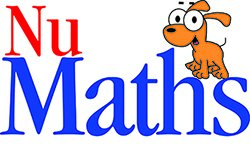|
Aqua level - Year 6
Whole Numbers
- number chart 1-100
- place values (base ten blocks)
- place values table
- the abacus (bridging 100 000 and 1 000 000)
- number lines
- expanded notation
- expressing a number in wordsv
- ordering, factors, prime numbers, multiples, patternsv
- adding or subtraction (10, 100, and 1 000)
- rounding to the nearest ten, hundred or thousand
- multiplication by powers of 10 and 100
- ordering whole numbers
Addition
- consolidation of addition (vertical format)
- 3 digit numbers with 4 digit numbers (with carries)
- addition patterns
- number lines (using number sentences)
- mental addition strategies
- grouping
- 5 digit with 4 digit (with and without carries)
- 5 digit with 5 digit (with and without carries)
- 6 digit with 5 digit (with and without carries)
- consolidation of addition and subtraction as inverse operations
- estimation techniques (nearest 10, 100, 1 000)v
- number sentences
- terminology (addend + addend = sum)
Subtraction
- consolidation of the subtraction concept
- story problems
- subtraction to 5 digits (with and without regrouping)
- estimation
- subtraction as difference
- subtraction to 6 digits (with and without regrouping)
- subtraction and addition as inverse operations
- story problems
- mental arithmetic
Multiplication
- consolidation of multiplication
- groups, rows, repeated addition, facts, factors, prime, composite square, factor trees, algorithmic process
- 2 digit numbers by 2 digit numbers (regrouping in units and tens)
- commutative principle
- associative principle
- distributive principle
- 3 digit numbers by 2 digit numbers (with and without regrouping)
- 4 digit numbers by 2 digit numbers (regrouping)
- multiplication and division as inverse operations
- estimation
- number patterns
- story problems
Division
- consolidation of 2 and 3 digit numbers by 1 digit numbers
- 4 digit numbers by 1 digit numbers (with and without regrouping and remainders)
- estimation
- division and multiplication as inverse operations
- order of operations
- introduction to simple long division (3 and 4 digit numbers by 2 digit numbers without remainders)
- estimation and calculator usage
- practical use of division (using story problems)
Fractions
- consolidation of fraction concept: fraction symbolism and mixed numbers
- conceptual development of decimal fractions: consolidation and up to thousandths
- conceptual development of percentage: equivalent fractions
- addition and subtraction of decimals:<
- tens, units, tenths, hundredths, thousandths
- comparing a mixture of fractions and mixed numbers
- multiplication of decimals - units, tenths and hundredths by: a single digit multiplier, a decimal multiplier
- division of decimals: concept of smallness of thousandths, division by a single digit whole number
- problem solving - story problems
Time and Money
- sequencing and durations: hours, minutes, seconds, days, weeks, fortnight, years, decades, centuries, A.D. and B.C
- measures of time
- calculating with time (using renaming), rate and speed
- o'clock, half past, 30 minutes past and minutes past, quarter past, a.m. and p.m
- representing time: minutes to and quarter to
- problem solving, transport tables
- calendars: including seasons, rhyme for number of days in themonths, write dates using correct abbreviations
- to or since certain events
- Identification of all coins and notes
- dollars and cents: written form, total value, transactions … shopping: multiple items, change given, rounding
- money: operations with money and conversion of $ and cents to cents
- percentages: fractions, percentages and money as related concepts v
- discount, increase, decrease by a certain percentage, % of, out of every
Measurement
- concept of mass: conservation of mass and the conversion of g/kg to thousandths, tonnes, gross, tare, net, difference between weight and mass
- concept of length: informal units of length, the metre, length, width, height, boundary = perimeter, kilometres, conversions
- P (rect) = L+W+L+W = 2L+2W = 2(L+W), P (square) = 4 x S, irregular and regular polygons, circumference, pi, C=(pi)D
- concept of area: part units, sq cm, sq m, hectares, area of rectangle and square
- concept of volume: ¼L = 250mL, ¾ L = 750 mL, 1.25 L, cubic cm/metres
- concept of angles: degree as unit of measure, right, straight, acute, obtuse,reflex, vertex, arms, protractors
- angles: sum of angles in a triangle=180°, sum of angles in a quad=360°, full rotation=1, revolution=360°, internal, external
Space
- Identify and describe plane (2-D) shapes: Geometric: point, boundary, regular and irregular polygons, diagonals, table of facts, nonagon, decagon,undecagon/hendecagon, dodecagon
- Compare and classify plane shapes: according to number and size of angles and sides, opposites equal, right corners, number of diagonals and lines of symmetry, trapeziums and quadrilaterals, congruent and similar
- classify triangles - right-angled, acute, isosceles, equilateral, scalene parts of a circle - radius, diameter, center, circumference
- Identify and describe 3-D shapes (solids): Geometric: cube; sphere; cone; pyramid; side; prism; cylinder; cross-sections, pyramid construction
- Symmetry: exploration through plane shapes, lines of symmetry, flip, slide and turn, parallel
- Compass directions and coordinates
Chance and data
- Introduction to probability: chance, possible, certain, likely, unlikely, more likely, least likely, best chance, equal chance, random events, terms, outcomes, etc
- Graphs: (3 and 4 column) organising, collecting and interpreting
- Graphs and data: line graphs, conversion graphs, simple circle graphs,collecting data from experiments; average = mean
Back to Content homepage
|

